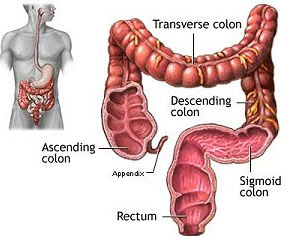 Sugar is in every single place you look and it might pop up in some stunning places. Did you know that most whole grain breads have not less than one type of sugar in them? We now have a nationwide candy tooth epidemic. Even if you don’t eat a whole lot of sugary treats you could experience intense sugar cravings in the first few weeks of the Atkins diet. So many “healthy” carbohydrate meals have hidden sugars in them, your physique may be experiencing withdrawal.
Sugar is in every single place you look and it might pop up in some stunning places. Did you know that most whole grain breads have not less than one type of sugar in them? We now have a nationwide candy tooth epidemic. Even if you don’t eat a whole lot of sugary treats you could experience intense sugar cravings in the first few weeks of the Atkins diet. So many “healthy” carbohydrate meals have hidden sugars in them, your physique may be experiencing withdrawal.The issue with sugar is that your blood sugar is tied into your energy levels and your total health. When your blood sugar is too low, you will experience intense cravings. Excessive blood sugar is a results of consuming high-sugar meals. Once you eat concentrated sugar, your blood sugar will elevate to excessive levels. Your pancreas thinks there is something fallacious and then it secretes insulin to lower the blood sugar. As this happens more, you possibly can create pre-diabetic conditions in your physique as your pancreas turns into worn out and ultimately can't secrete insulin.
Happily, getting started on the Atkins weight loss plan plan can put a stop to this cycle. However, this doesn’t imply that sugar cravings go away automatically. Sugar merchandise are everywhere and temptation is sometimes laborious to fight.
The easiest way to approach sugar cravings is with planning. For those who keep a steadiness of protein, fat and fiber in your each day weight loss plan you'll prevent blood sugar drops that lead to sugar cravings. Additionally, do not go too long between meals without eating. Snacks are an vital a part of retaining your blood sugar stable. Have some useful snacks like cheese, nuts, seeds and boiled eggs readily available with you so you'll be able to rapidly stabilize your blood sugar without turning to candy treats.
Sugar cravings can be a sign of a dietary deficiency. If you end up low on magnesium, you will crave chocolate and other sweets. Zinc and chromium can also stave off sugar cravings. In case you aren’t taking a superb multivitamin supplement with these minerals, begin immediately. If you're and you're nonetheless experiencing cravings, think about making an attempt additional supplements of those nutrients.
Another tactic is to brush your teeth. Many Atkins dieters find that brushing their enamel or using Listerine breath strips might help with cravings. Both methods will numb your mouth and prevent you from wanting to eat. Ingesting two giant glasses of water may also assist eradicate cravings. If your abdomen is full, then you definitely’ll be less likely to reach for a sugary treat.
Sometimes out of sight, out of thoughts is the best approach. If you end up overcome with cravings when you are at house, get outdoors and take a walk. The distraction can have you forgetting your sugar craving in no time. Calling a friend for support or logging into an Atkins help forum also can go a great distance towards stopping you from succumbing to sugar cravings.
Having a low-carb model of your favourite treat is another good idea. You're much less likely to feel disadvantaged should you can have a satisfying low carb treat. There are a wide variety of low-carb merchandise obtainable in the marketplace that can beat your candy tooth. Low-carb yogurt, chocolate, ice cream and sweet can all allow you to stay on the Atkins plan and nonetheless get one thing sweet to eat.
Sugar cravings are a actuality of following the Atkins plan, however the earlier tips will help you overcome them and keep dedicated to your weight loss efforts.

 The foremost criticism of those who use the Atkins weight-reduction plan is the intestinal issues that are related to lowering carbohydrates. These problems can include constipation and diarrhea. These symptoms can happen to anyone in some unspecified time in the future, however those who follow a low-carb weight loss plan are particularly prone.
The foremost criticism of those who use the Atkins weight-reduction plan is the intestinal issues that are related to lowering carbohydrates. These problems can include constipation and diarrhea. These symptoms can happen to anyone in some unspecified time in the future, however those who follow a low-carb weight loss plan are particularly prone. Ketones are precise a normally and efficient supply of gas for the human body. They are created in the liver from the fatty acids that end result from the breakdown of body fat. These solely appear when there may be an absence of glucose and sugar. Within the Atkins food regimen, you reduce the amount of glucose and sugar that's in the bloodstream. Consequently, your body produces ketones for fuel. When your physique is creating ketones it's called ketosis.
Ketones are precise a normally and efficient supply of gas for the human body. They are created in the liver from the fatty acids that end result from the breakdown of body fat. These solely appear when there may be an absence of glucose and sugar. Within the Atkins food regimen, you reduce the amount of glucose and sugar that's in the bloodstream. Consequently, your body produces ketones for fuel. When your physique is creating ketones it's called ketosis.